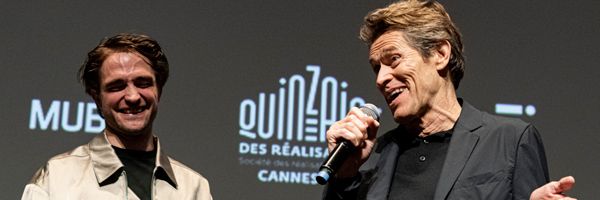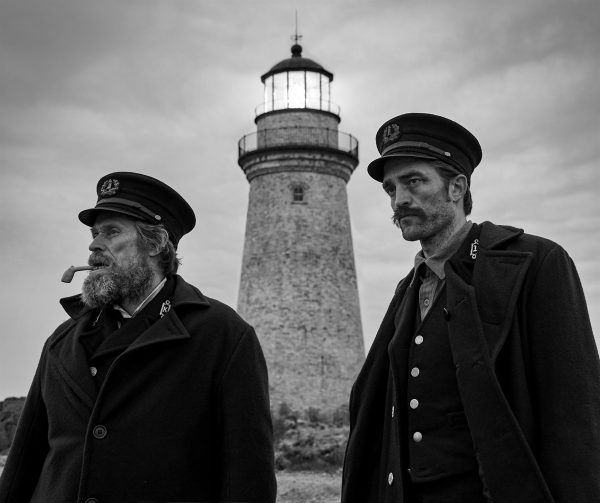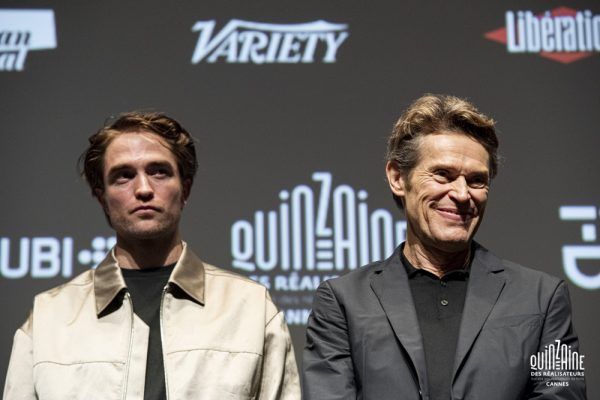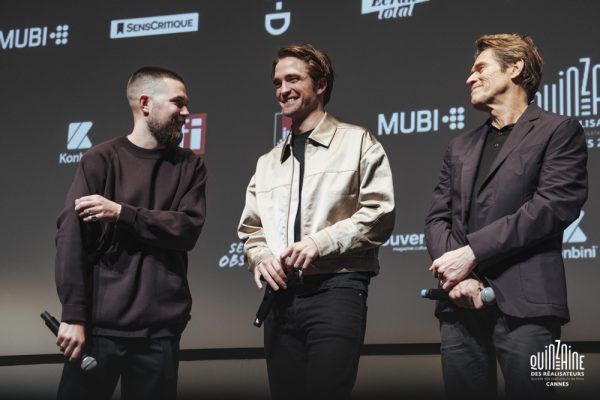Robert Eggers’ horror film The Lighthouse is one of the best in Cannes (click here for our review). As the Cannes Festival progresses into its final days it is becoming increasingly clear that many of the best and most adventurous films can be found outside the competition.
The American director’s second film after his prize-winning The Witch pits Willem Dafoe against Robert Pattinson as the new recruit who arrives for a four-week stint at an isolated New England lighthouse in the 1890s and gets stuck there during a storm.
The British actor and current contender for the role of Batman is increasingly showing his acting chops—and you need them when you come up against Dafoe. Certainly Pattinson is no longer just the teen idol from The Twilight Saga, and here as the new guy working in Dafoe’s lighthouse comes to stand up for himself. The 33 year-old says it really helped that they rehearsed beforehand.
“My character is so quiet and bunged up that I was afraid to show anything,” he recalls. “So it was nice to have that pressure in the hotel in Halifax, being contained and not really showing anything that felt artificial.”
Indeed it’s hard not to imagine that the two men, Thomas Wake (Dafoe, 63, is playing much older) and Ephraim Winslow are not at each other’s throats. That is unless they get blind drunk and bond as they regularly do, especially when the weather turns inclement and they are stuck together with little food but lots of alcohol in a confined space.
“We built everything you see in the film,” notes Eggers. “We couldn't find a period lighthouse that worked that would be on a remote island and be impossible to get to, so we shot at the southern tip of Novia Scotia on this peninsula of volcanic rock called Cape Horseshoe and we build a 70-foot working lighthouse that could shine for 16 miles. But Cape Horseshoe was a very unforgiving place. There were no restaurants, the wind was relentless and could be blowing so hard that I couldn't hear Rob and Willem as I was standing close to them. But we wouldn't have had the believability of the storm if we weren’t actually shooting in it. There are many scenes where you might think we have wind machines and rain machines--and we used them too. Often the most crazy dramatic moments were photographed for real.”
Pattinson admits he was put through the wringer.
“I always find it makes it easier as soon as you forget your body,” he says. “Even some of those scenes pushing the wheelbarrow around were impossible, but it was especially important that the physical part have some kind of realism to it. Because of the nature of the story you could really push the physicality and there aren’t too many movies or parts where you can really fly with your body without looking completely ridiculous or out of place. So it was a joy to do.”
There are some funny moments too like when Dafoe’s old curmudgeon farts furiously. Though Pattinson admits that in reality the bodily function was not restricted to Dafoe’s fake ones.
“There were a number of real farts for sure,” he chuckles. As for his most challenging scene he says it was probably running to see the mermaid in one of the film’s most fantastical moments.
“It doesn't look like how death-defying it actually was. We were literally running through rocks that were like blades wearing period shoes. Trying to sprint through that I really felt like I was taking my life in my hands.”
Dafoe’s most difficult scene was being buried alive. “It’s not pleasant as you can imagine,” the seasoned theatre actor notes. “But saying beautiful poetic dialogue while trying to do it justice at the same time was a challenge.”
Eggers explains how his brother Max originally had the idea to write a ghost story in the White House and they ended up working on this script together instead. “I like to do a lot of research so it’s period-correct. And to achieve this crusty, dusty, mucky, rusty, tactile atmosphere I knew it needed to be in black and white. It’s not supposed to seem like an old movie, but it’s supposed to evoke some of these same feelings by shooting in this antiquated aspect ratio of early sound films [Academy ratio 35mm] which is a great format for shooting lighthouses and these faces and being in this cramped space. But it also brings you to the past. Not just with the film stock but we had a custom filter made for us that gave the look of a early cinema which we’re not familiar with and this makes all the flaws and blemishes in these men’s faces come to the forefront.”
The film is a visual feast though Eggers also took great pains to get the dialogue right. Did Melville and Moby Dick figure?
“My brother and I read a lot of period texts to try and absorb the feeling, the vibe of how people can speak and certainly Melville is something that we turned to,” he says. “I think in this film there are similar mythological signposts and warnings of things that have been in Moby Dick, but they’re different. Sarah Orne Jewett was a Maine-based writer, who was particularly helpful to my brother and I because she interviewed farmers and sailors in the late 19th century and then wrote her work in dialect. Rob’s dialect is based on Maine farmers and Willem’s dialect is based on maritime dialects.”




